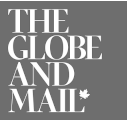Formalizing your investment goals and values can help to keep you on track — even when circumstances change
If you’ve ever met with a wealth manager to set up an investment portfolio, you’re likely familiar with some of the standard questions you’re asked upon intake: what are your investment goals, what is your timeframe, how comfortable are you with risk, etc. Your answers to these questions form the basis of how to create your personal investment philosophy.
They’re questions designed to ensure you get a portfolio that achieves your goals, and any wealth manager you work with will likely have some version of these questions along with others as part of their process of putting together an investment policy on your behalf.
But before you have this conversation — or fill out the form — it’s a good idea to do some thinking about your own personal investment philosophy so that you have a solid understanding not only of your timeframe, goals and risks, but also of your values and how they translate to the kinds of investments you want to be making.
What is an investment philosophy?
Your personal investment philosophy is your opportunity to formalize your thoughts and feelings — and to put some parameters around — how and where you invest your money.
It takes into account not only your goals and timelines, but also your interests, values and beliefs about how your investment dollars are working for you — and for society at large. “Some investors want specifically to divest of fossil fuels, while others may also want to avoid other harmful products and services such as junk food, GMOs and factory farming,” says Sue-May Talbot, portfolio manager and partner at Genus.
Having a long-term plan will help you to navigate short-term market changes, Talbot adds. “It protects you from moving in and out of the market — and making emotional decisions — as things change.”
Changes in personal circumstances or in the markets can leave investors scrambling. But a personal investment philosophy can help you to stay on track, even when everything else is in motion. “You can always go back and ask yourself what has changed,” she says. “If the only change is due to a short-term market fluctuation, and you have the same time horizon and investment objectives, then why change your investment policy?”
Here’s a look at how to create your personal investment philosophy and what to put in it.
What should I put in my personal investment philosophy?
A typical investment philosophy is centered around four or five key pieces of information.
- Your goals as an investor, including any income requirements
- Your timeline for investing
- Your return expectations
- Your comfort with risk and volatility
- Your beliefs and/or values
Some of your answers here are going to be obvious and many of them will be interrelated. For example, are you investing for your retirement or looking to grow your capital to put toward a purchase in the near term?
If you’re in your thirties or forties, and you’re investing for your retirement, then you have a long timeframe for your investments. This can allow you to take some risks knowing you have a long timeline for growth.
“People often equate age to an investment’s time horizon,” says Talbot. “If you’re saving for an upcoming purchase, then you’d want a short-term investment. A longer term investment might be a nest egg for retirement.”
If, however, you’re in retirement, and looking to draw an income from your investments, then you’ll need to factor this in. “If we had to generate income, we would choose different investments,” Talbot says. “And if you have a high income requirement, for example 10% per year, then you’d need to know that this could encroach on your capital and cause your investment to shrink.”
Finally, to create a complete personal investment philosophy, and perhaps where you want to afford the most consideration, is your beliefs and values as tied to your investment capital. Whatever you buy with your investments is essentially a vote with your dollars toward the growth of that company or sector. So you’ll want to ask yourself whether you want your investments supporting industries that don’t align with your values. For example, many of our clients come to us for sustainable and impact investments that divest of fossil fuel industries, and that support positive net impact organizations that are making a difference in the world.
Aligning your beliefs and values with your investment philosophy gives you the ability to act on those values and put your money to work for society in a way that supports the impact you want to have in the world.
So how do I use it?
Once you know how to create your personal investment philosophy, you can formalize it on paper and use it as you work with your wealth manager to put together your portfolio. But don’t stop there!
Be sure to revisit your philosophy annually and revise it if needed — especially if you experience a significant change in your personal circumstances, like an inheritance or a home purchase.
“You could have the same investment philosophy or policy for your whole life,” Talbot says. “But often I find that risk tolerance is the one element that changes. Until you experience a significant downturn, like the one we went through at the peak of the COVID crisis, you don’t really know how you’re going to react. If the fear of market fluctuations is taking an emotional toll and causing you to lose sleep, perhaps it’s time to reduce your market exposure. However, a well documented long-term investment plan should help investors to weather any short-term market changes.”
Ready to start growing your money while having a positive impact in the world?

What Happens to Shared Assets When a Relationship Ends in Divorce?
What happens to assets in a divorce under BC law? Learn how shared property is divided for married and common-law couples, and what to expect during separation.

If You Care About Creating Real Investing Impact, You Need Data More Than Ever
Women investors are often mislabeled as cautious, yet research shows they can outperform. Learn how myths and systemic barriers still limit women’s investing power.

Watch on Demand – When a relationship breaks down, what does it mean for assets?
This session will unpack the fundamentals of property division during separation or divorce—covering key rules, common pitfalls, and how to protect your financial well-being.











